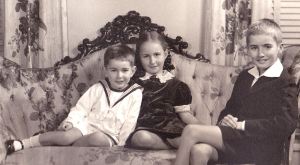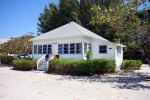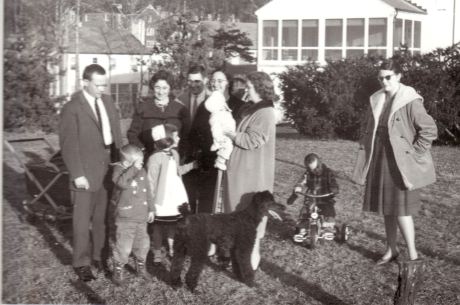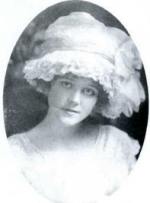Harriet Bruce Matthews Metcalf, 1928-2012 June 28, 2012
Posted by Mary W. Matthews in Personal anecdotes.trackback
My father’s younger sister died a few days ago. Ever since, I’ve been haunted by the realization that as the oldest “child” of my generation, I’m the only Matthews left who remembers Harriet well. To my brothers and cousins: she deserves more.
* * *
In her youth, Harriet was the classic middle child, a plain Jane born almost equidistant between a tall, handsome, brilliant older brother and a shorter, even more handsome, even more brilliant younger brother. Her mother had a strong personality, which (according to my mother) led to conflicts, invariably won by Grr. Her father died in the summer of 1949, when Harriet was 20 years old and had just completed her freshman year in college.

This photo was taken around 1937, when Tommy would have been six years old, Hatty would have been eight, and Sam would have been 11.
Like her mother before her (and me in her footsteps), Harriet attended Smith College, one of the Seven Sisters colleges founded in the 19th century to serve high-achieving female intellectuals. Like her mother before her (and me in her footsteps), Harriet lived in Tyler House, one of the oldest residences on campus. It was a first-class education in a beautiful and stimulating environment.
In the early 1950s Harriet achieved a master’s degree in library science, but her family never valued this evidence of intellectual attainment as it ought to have been valued, at least in my presence. My father and his brother were the stars of the family; my grandmother was the matriarch who always reminded me of Margaret Dumont; and Aunt Hatty, or Hats, was at best one of the “secondary leads” to the family sitcom — the kind of character whose name is shown in the credits “above the line,” but who does not necessarily appear in every episode.
(As her niece, I automatically called her “Aunt Hatty” or “Hats” until the end of 2011, when it was made clear to me that today, I am the only person alive who even remembers those old nicknames. . . .)
In the middle 1950s, Harriet married a quiet, unassuming man named Ned Pearce. My mother always told me that, present at the wedding as a toddler, I stood on one of the pews and delightedly told the other guests, “I have new lellow panties on . . . SEE?”
Uncle Ned looked like a cross between the actor Wally Cox and a skinnier version of the comedian Louie Anderson. After about 1960 or so, he stopped coming to family events, and I never saw him again; but before that, I remember a man who was offhandedly kind to us children without seeming to have the slightest empathy with us, and very little interest. Ned did something important-sounding (to me as a child) at the Boston Museum of Science, while (if I remember correctly) Harriet worked in a bookstore. They lived in an apartment, which I thought was urbane and glamorous, but I primarily remember the two cats. Harriet was only rarely without two or three cats in her life.
Our family used to vacation in a small town on Cape Ann in Massachusetts, and the last summer that Ned came, he brought a Resuss Annie with him and taught the whole family the brand-new technique now called CPR. (Nine years later, when Captain Kirk used the outmoded technique for artificial resuscitation in 2268 in “The Paradise Syndrome,” I was scornful about the intelligence of scriptwriter Eric W. Weisstein!)
In this photo from 1959, taken by my father, Sam, my mother is in the center of the group, holding my months-old sister, Katy, in her arms. Harriet’s face is partially hidden by Katy’s head, while Tommy’s face is mostly obscured by Katy’s shadow. At far right is Tommy’s wife, my aunt Joan, while Uncle Ned is at far left. The boy on the trike is my brother Tom, the other boy is Dave, and I’m the child in the nurse’s uniform, standing in front of my grandmother. Grr’s poodle Orly was named after the Paris airport.
.
In 1969, flush with her inheritance after my grandmother’s death, Harriet decided to do a Grand Tour of Europe, and took me with her. An introverted 16-year-old at the time, I considered myself to be just as much of a plain Jane as my aunt, and thus a fitting companion. It never occurred to me to wonder why Harriet preferred my company over that of her husband — or, if it did, I must have concluded that one doesn’t look a gift opportunity to see England, France, Switzerland, Germany, Denmark, Sweden, and Norway in the mouth. It was a wonderful Grand Tour, beginning with the maiden voyage of the ocean liner Queen Elizabeth II . . . but possibly my most vivid memory was being halfway across the Atlantic on July 20, 1969. (First whiskey sour, in celebration, even though I was only 16. First hangover.)
I was a terrible companion. I got bored with the fjords after only a few hours and read a book. I was polite about Omaha Beach, which I had never heard of. The chateaux of France interested me far less than seeing whether I could flirt with French boys in their own language. I would have gotten infinitely more out of the whole experience if I had done even a token amount of homework in preparation. Harriet, who never had children of her own, at age 40 spent roughly a month with an ungrateful 16-year-old child and never, to my memory, allowed an ungenerous word to pass her lips.
Harriet’s first marriage was officially dissolved a year or two later, while I was in college. Decades later, I learned a sad fact that may explain why: Uncle Ned died of AIDS in the early 1990s. My mother had never trusted Uncle Ned as she trusted Uncle Tom, Daddy’s brother — but Ned was never anything other than kind to me.
Harriet lived in Nevada while she was obtaining her divorce; then she moved to a suburb of Denver, Colorado, where she met her second husband, Earle Metcalf. I was the maid of honor at Harriet’s second wedding . . . and made no public announcements about what underwear I had on, this time!
Earle, ten years older than Harriet, came to her “used”; I’m under the impression he was a widower. They were married from August 8, 1974 until Earle’s death on May 16, 2011, three months after he turned 92. Like Harriet, Earle was a deeply devout Presbyterian. When he married Harriet he instantly became considerably more popular with the family than Ned had been; but he was not a quick-witted man, and as a girl I often wondered what had attracted Harriet to him.
I remember in the early 1990s, however, having Harriet tell me that she had been married to Ned for 17 years, and she had just surpassed that mark, having been married to Earle for 18 years and counting.
I said to Harriet, “I’ll bet when you realized that fact, you thought to yourself, Ha ha, I’m happy now.”
There was a long pause. I conjectured to myself, Harriet is a fine Christian lady. She’s thinking right now, what is the best answer? Would it be unkind to Ned’s memory for me to agree? At the end of the long pause, Harriet said quietly, “Well . . . yes.”

In 2005, Earle and Harriet made their annual pilgrimage to Sanibel Island.
My husband, in the foreground, came to his senses about the ponytail
soon after he saw this photo.
* * *
Harriet’s greatest and truest love, however, was neither Earle nor even Presbyterianism; it was Sanibel Island. Harriet’s grandparents were among the first settlers of the island after the Lighthouse was built in 1884, and the island is still crawling with my cousins — those who can still afford it, now that it’s a popular tourism destination. Unlike Harriet’s first cousins John Matthews Bailey, Francis Matthews Bailey, and Samuel Matthews Bailey, Harriet was never a permanent resident on Sanibel; but this was not even a speed bump in Harriet’s making the island peculiarly her own.
Until 1963, one could reach the island only by ferry. Although Sanibel’s seashells quickly made the island popular with vacationers, collectors, and conchologists, when Harriet came to know and love it, it was a tiny, quiet community of stunning natural beauty. (Even today, there are only about six thousand year-round residents, although Sanibel is approximately 50 percent larger than Manhattan.)
In 1895, my great-grandparents, Will and Harriet “Hallie” Matthews, moved to Sanibel from Peewee Valley, Kentucky, a tiny town whose main claim to fame is being the setting for Annie Fellows Johnston’s semi-biographical “Little Colonel” series of children’s books. In what is almost certainly a coincidence, the real-life girl on whom the Little Colonel was based was named Harriet “Hatty” Cochran.The federal Homestead Act had just expired, but the state of Florida was offering land on Sanibel free for three years to settlers who promised to farm it. While Will tried his hand at farming, not very successfully, Hallie became popular with her neighbors as a cook. Hallie was soon persuaded first to start her own home restaurant (which for the rest of her life was a roaring success) and then to take paying guests into her home, and “The Matthews” quickly became a popular vacation getaway, even though it lacked such frills as running water and indoor plumbing. (When guests asked about bathtubs, Granny would gesture at the Gulf of Mexico and say, “There is the most beautiful bathtub in the world.”)
(When guests asked about bathtubs, Granny would gesture at the Gulf of Mexico and say, “There is the most beautiful bathtub in the world.”)
In 1914, Hallie and Will — no longer farmer but innkeeper — added a 30-bedroom building to their property, called The Barracks, and a pier that was destroyed by the hurricane of 1926 and never rebuilt. They also built a small private home for themselves, the Matthews Cottage, that is still there and still available to well-heeled guests. (In the 1960s, my family spent one Christmas in the Matthews Cottage!)


.
Harriet may have loved her childhood home in Lewistown, Pennsylvania; she may have loved Northampton, Massachusetts, Boston, Denver, and New Bern, North Carolina. But Sanibel Island, Florida was her “belonging place,” the one place on Earth where she was deeply happy. Possibly her most prized possession was her one share of stock in the Island Inn — the still-thriving business that a hundred years ago was simply her Granny’s “Matthews Hotel.”
* * *
She was gentle and humble, faithful and kind, generous and gracious. She had a strong sense of family and an even stronger sense of duty. She worked as a librarian well into her late 70s, not because she needed to but because that was her profession.
She was scrupulously clean and tidy. The New Bern home she shared with Earle until both grew too sick and too old was beautiful and serene. She was better at driving their car than Earle was, which is to say that I was never too frightened to drive with Harriet. (But I was almost too frightened!) She was more intelligent than she would ever have admitted, especially after she married Earle. She never forgot a birthday, or any other important milestone, although in the last few years of her life she was too absorbed by Earle’s declining health to spare much energy for anything else.
Her entire life, Harriet was a genius at gift-giving, always coming up with the odd book or trinket that you had never known was perfect perfect perfect until she gave it to you. I still have every book she ever gave me. I still have the SLR she gave me on my graduation from Smith. I still have an ancient arrowhead that Hatty gave to my father some time around 1970. The documentation is long lost, and I no longer remember even how ancient the arrowhead is or where it was found, though I’m under the impression it’s Roman or older. I think it might be made of bronze.
I’ve spent the last three days thinking about why this arrowhead speaks Harriet’s name so strongly to me, and I still don’t think I have a good answer. I suppose it’s that she was beautiful and valuable, valuable for The Ages, while simultaneously she humbly preferred to be overlooked, forgotten, dismissed as an undistinguished relic of a forgotten era. . . .




This is a wonderful retrospective. Generations will thank you. Well done.
Dear Mary,
Thank you for this. Thank you for taking the time to write it and thank you for sharing it.
Love
Charlotte
Hello Mary
A great story…could be first installment of a volume of “Eminent New Englanders”…a type that has I think almost died out (can include non-New Englanders educated in New England and inculcated with the old Waspy virtues and other traits).
I found this story because, on a sudden whim, I googled “Ned Pearce”…in the late 1950s, he was one of the instructors in a “Science Explorers” course that I attended at the Museum of Science. The course was designed as a science enrichment program for 10 to 14 year olds. I think Ned may have been the Museum’s director of eduction. In any case, your description is right on — to this day I can’t see a photo of Wally Cox (not that one sees many photos of Wally Cox) without thinking of Ned (those round plastic glasses…). As a city kid, I very rarely ever got beyond the Boston city limits, and when some friends and I asked Ned about a place we had heard of, Dogtown Common on Cape Ann, he offered to lead my Boy Scout troop on a trip there (I think we packed about seven people into his rather small car – an old Ford, I believe). Later he took us to another couple of interesting spots on in Essex County…a very nice man, if a bit inscrutable…(as you indicated, he may have had some secrets). i moved out of Boston in the early 60s, and only saw him one more time, in a crowd at a suburban mall years later, but he didn’t recognize me. Always wondered what became of him….very sad, indeed.
Again, many thanks for the story.
Thank YOU!! It’s actually a mild thrill to find anyone else in the world who remembers Uncle Ned. My two younger brothers don’t remember him in the slightest….
In the wild coincidence department, Cape Ann was where I knew Ned best! — my grandmother rented a house in Annisquam most summers. I went back on a whim in 1974, and the house’s new owners were happy to show me around, and SO proud of everything they had done to eradicate my childhood memories. And still I can remember the “secret” path to the beach, which by 2012 is either overgrown or gone altogether. Sigh….
Annisquam…one of my favorite places in the world…does the secret path to the beach go up over a hill by a couple of very large boulders, where someone has built a stone bench (the bench may be after your time)?
This is a wonderful piece. Uncle Ned was my uncle and I was at that same wedding. I loved harriet to pieces and she and my mom stayed in touch until Hattie died. I would love to talk to you should you read this message. bstasz@aol.com
Thank you for an interesting piece. I came across it because I was googling my great-great-grandfather, Chambers Phister, and the Phister cottage at the Island Inn came up. My mother, born in 1928, always talked about the wonderful vacations she would go on to Sanibel with her family, the Phisters and Stegemans. She had a great shell collection from her girlhood. They were from Ft. Thomas, Ky. and I think they may have stayed at the Island Inn. Do you happen to know anything about the Phister connection? Unfortunately my mother is gone now and there is no one left to ask.
–Mary